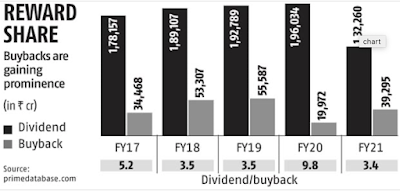East Asian trade is set to rise even further in importance because the scale of the region’s economic recovery is larger and faster than anywhere else. Asia was already the second most integrated regional trade network after the European Union in 2019, with regional trade at 58 per cent of total trade. East Asia’s trading system is likely to become more inclusive and sustainable with its rapid shift to digital platforms.

East Asia is leading the global e-commerce revolution. Business-to-consumer (B2C) platforms (e-commerce, online travel, advertising technology, transport, e-services and digital media) generated US$3.8 trillion in revenue in 2019, with US$1.8 trillion of it in Asia. E-commerce alone accounted for US$1.9 trillion in revenue globally and US$1.1 trillion regionally. China is at the front, accounting for 45 per cent of e-commerce transactions. Online sales already represent 12 per cent of total retail sales in Asia, compared with 8 per cent in Europe and North America. The digital economy is expected to add US$1 trillion to Asia’s GDP in the next 10 years.
The e-commerce movement is evolving to include cross-border transactions. Cross-border B2C e-commerce generated an estimated US$404 billion in sales in 2018, up 7 per cent from the year before. Business-to-business (B2B) sales account for 80 per cent of cross-border e-commerce, but B2C represents the fastest growth. China is the global leader, home to most of the largest online retail and auction sites. Cross-border transactions now account for 10 per cent of e-commerce sales in China. COVID-19 has likely driven these figures higher as consumers turn online.
There is still considerable room for growth. E-shopper penetration — the share of the online population that make purchases online — is below 50 per cent in Asia, much lower than other regions. Digital divides still hamper progress — only 56 per cent of the region has internet access. But the region has seen dramatic growth since 2010, with notable progress in Thailand (up 44 percentage points), Brunei (up 42 percentage points), Cambodia (up 39 percentage points) and Vietnam (up 38 percentage points). ASEAN countries are adding 125,000 new users every day. Around 94 per cent of the region is covered by a 4G network.
These digital consumers represent a new market. It’s estimated that 40 per cent of internet spending in China and 30 per cent in Indonesia represents new consumption, rather than substitutes for in-person purchases. E-commerce platforms are tapping into unmet consumer needs.
Digital platforms are also fostering inclusion. For consumers, they are driving down prices, adding choice, and reducing transaction costs. Simultaneously, digital platforms are expanding the reach of micro, small and medium-sized enterprises (MSMEs). Digital platforms are also opening up opportunities for those in lower-tier cities and rural areas. This is where the majority of East Asians still live, so digital growth is translating into inclusive growth.
E-commerce platforms are connecting younger and peri-urban consumers with international brands. Tmall, one of Alibaba’s platforms, is providing preferential rates to international companies and allowing firms to sell on their platform without a license to operate in China. 29,000 brands came onto the platform in 2020 and 80 per cent entered the Chinese market for the first time. Of Tmall users, 45 per cent are from lower-tier Chinese cities. These platforms are connecting consumers outside major metropolitan areas with the region, and offering younger consumers, whose preferences will dominate for years to come, choices from throughout the region.
One feature that makes cross-border purchases on digital platforms easy is the presence of digital wallets that can be used for any product on the platform. As payment modalities become integrated, markets too can become more integrated. AliPay is acquiring local mobile-money startups across the region.
The growth of fintech is dramatically expanding financial inclusion. More individuals have access to a range of financial services without needing an account at a formal financial institution.
Inclusive economies tend to have more dynamic MSMEs. Digital platforms serve MSMEs in different ways. First, they reduce financial costs. Credit card fees cost US small businesses an average of 2 per cent of gross sales. Alipay and WeChat Pay, on the other hand, have no transaction fees on their digital commerce platforms and a 0.1 per cent fee on outside transfers.
Second, e-commerce and fintech players are using real-time transaction and social media data to improve risk assessments and to offer loans to MSMEs. Ant Financial’s online lending model is designed to take three minutes to apply and one second for money to be disbursed into the merchant’s account with zero manual operations. Ant’s small and medium-scale enterprise-dedicated service Mybank reached 25 million SMEs by its fifth anniversary in 2020. Mybank also focuses on filling the financing gap for female-owned MSMEs, adding to inclusion.
Third, digital platforms provide MSMEs with a range of technical assistance and market information services that increase productivity and export revenue.
East Asian growth powered by digital platforms will be strong and inclusive if the region invests in digital infrastructure and human capital. Governments also need to coordinate on oversight and regulatory mechanisms to ensure that new platforms are accessible and not exploitative. ASEAN countries have formed an e-payments coalition to support the development of a regional digital payment framework. More will be needed through international agreement and cooperation to protect data privacy and strengthen cybersecurity.
Homi Kharas is a Senior Fellow in the Center for Sustainable Development program at the Brookings Institution.
Meagan Dooley is a Senior Research Analyst in the Center for Sustainable Development program at the Brookings Institution.
An extended version of this article appears in the most recent edition of East Asia Forum Quarterly, ‘Reinventing global trade’, Vol. 13, No. 2.
The post East Asia leads e-commerce and the digital trade revolution first appeared on East Asia Forum.
]]>The company board approved share buyback programme worth up to Rs 9,200 crore priced at Rs 1,750 per share, a premium of 25.12 per cent over the stock’s closing price on the BSE, of Rs 1,398.60 per share, as on Tuesday.
It also has another article pointing to the rise in share buybacks in corporate India.
The article argues that the recent changes in taxation has prompted this rise. From April 1, 2020, dividends in the hands of shareholders were brought under the tax net and that too at the marginal tax rate, and dividend distribution tax on the company was removed. Further, capital gains on buyback are taxed at 20%. The arbitrage opportunity is clear and irresistible.
“Dividends impact promoters and significant shareholders with an additional tax burden of 20-30 per cent over a buy back. No reason why shareholders would want to bear that burden, especially companies with large promoter or investor shareholding,” said Praveen Raju, Partner, Spice Route Legal.
I am not sure why such regulatory arbitrage should be allowed.
Shareholders are by definition putting forth risk capital. Technically, for them, it should not make any difference as to how they realise returns – either as dividends or buybacks. Both are realised returns on their investment. I don’t know a reason why one form should get a preference over the other in taxation in the hands of shareholders.
Of course, for a company, there are important implications on which route they take to share gains with shareholders. And the corporate tax treatment should take that into account.
The rise of buybacks also raises an intriguing point. On the one hand, corporate India has done well to emerge out of Covid in good health (though the outbreak of the second round raises questions). It’s well placed to invest and grow. But, on the other hand, this rise in buybacks among the biggest companies points to less confidence on economic prospects. Buybacks are after all displacement of capital from investments.
Much has been written on the corrosive effects of share buybacks in the US, including in The Rise of Finance.
The New West Indian Guide / Nieuwe West-Indische Gids has published a new issue. NWIG Vol. 95 (1&2) is now available online, gratis.
The first article by Benjamin Narváez is entitled “Re-envisioning Caribbean Costa Rica: Chinese-West Indian Interaction in Limón during the Late Nineteenth and Early Twentieth Centuries.” Narváez analyzes the intricate relationship between the large West Indian immigrant community and the smaller Chinese population group. In hopes of maintaining their culture and in response to the prejudice they faced, both groups formed their own tightknit transnational subcommunities. Nevertheless, they also interacted with each other. These interactions ranged from tension and conflict on the one hand, to routine, peaceful interaction and even collaboration on the other. In particular, class differences and the marginalization these groups experienced combined to produce this complex relationship. Tension and conflict often emerged due to both sides hoping to move up the social ladder and because of the economic power that many Chinese held as shopkeepers and lenders. Nevertheless, as groups experiencing social marginalization and living in proximity to each other, they could develop neutral or positive social and economic relationships.
This is followed by Omar Ramadan-Santiago’s “Constructing Spiritual Blackness: Rastafari in Puerto Rico.” He discusses how members of the Rastafari community in Puerto Rico claim that they identify with Blackness and Africanness in a manner different from other Black-identifying Puerto Ricans. Their identification process presents a spiritual and global construction of Blackness that does not fit within the typical narratives often used to discuss Black identity in Puerto Rico. Ramadan-Santiago argues that their performance of a spiritually Black identity creates a different understanding of Blackness in Puerto Rico, one that is not nation-based but rather worldwide. This construction of Blackness and Black identity allows the author’s interlocutors to create an imagined community of Blackness and African descent that extends past Puerto Rico’s borders toward the greater Caribbean region and African continent.
In addition, this issue includes a review article by Jean Stubbs discussing four recent books on Cuba, a 33-page Bookshelf by Richard Price and Sally Price on publications that are not fully reviewed in the journal, plus 50 full book reviews.
(All past issues of the NWIG, dating back to 1919, are also available; see https://brill.com/view/journals/nwig/nwig-overview.xml)
]]>
